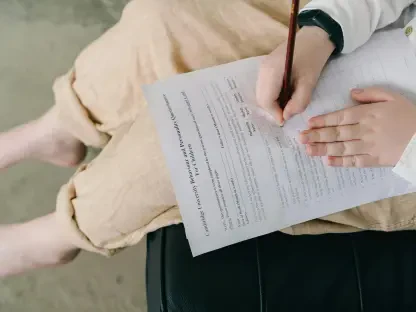Oklahoma Homeschool Regulations Debate: Balancing Safety and Freedom
The state of Oklahoma has a long-standing tradition of allowing parents to homeschool their children, a right enshrined in its constitution. Recently, however, there have been renewed calls to introduce more stringent regulations for homeschooling. State Rep. Amanda Swope, D-Tulsa, has been at the forefront of this push, proposing a bill that would require state registration and background checks for parents and guardians who homeschool their children. Although this bill did not receive a hearing, Swope has continued to advocate for state regulation through a House Common Education Committee interim study. Her primary concern is that some child abusers exploit the lack of regulatory oversight by claiming to homeschool.
Arguments for Increased Regulation
Concerns About Child Abuse
Advocates for increased regulation argue that the current system allows potential child abusers to evade detection. Swope cites instances where children are withdrawn from public school once abuse concerns surface. Samantha Field from the Coalition for Responsible Home Education also points out that the absence of homeschool regulations in Oklahoma creates an environment ripe for exploitation by abusers. According to Field, over the past 24 years, 31 children nationwide have died under circumstances where they were withdrawn from public schools under the guise of homeschooling. Additionally, there have been 148 cases of extreme, torture-level abuse among children reportedly being homeschooled.
While these incidents are dire, they represent a minuscule fraction of the total child population in the United States. In 2021, approximately 54.2 million K-12 students were enrolled nationwide, with 3.13 million being homeschooled. The extraordinarily low frequency of such tragic incidents raises questions about the proportionality and effectiveness of imposing blanket regulations on the entire homeschooling community based on the actions of a small minority. This statistical context highlights the complexity of implementing broad policies that address the needs of a few without undue burden on the majority.
Data-Driven Concerns
Beyond the emotional appeal of tragic cases, proponents of increased regulation also base their arguments on data-driven concerns about child welfare and safety. They argue that even a single child’s death or severe abuse case is enough to warrant regulatory measures designed to catch potential abusers. By mandating state registration and conducting background checks, advocates believe that it would be possible to create a baseline of oversight that could deter individuals with malicious intent from exploiting the homeschooling system. This, they argue, aligns with broader child protection goals and could be integrated into existing frameworks without excessive difficulty.
However, critics of these measures counter that the data does not justify such sweeping regulations. They argue that most homeschooling families provide a caring and effective educational environment for their children and should not be subjected to onerous regulations because of the actions of a tiny minority. Further, they point out that existing statistical evidence does not indicate a widespread crisis in homeschool abuse, suggesting that targeted, rather than blanket, policies might be more appropriate. These opposing views create a dynamic debate about where the balance should lie between child protection and parental freedom in homeschooling.
Issues in Public Schools
Systemic Failures in Abuse Identification
The discussion also highlights that public schools have their own set of failures in identifying and reporting abuse. Joe Dorman, CEO of the Oklahoma Institute for Child Advocacy, acknowledges that systemic problems exist in how abuse cases are handled within public schools. Teachers sometimes report abuse concerns to administrators who fail to escalate these concerns to law enforcement, delaying or preventing timely interventions. These lapses can result in prolonged abuse going undetected, undermining the argument that public schools are inherently safer environments for children compared to homeschooling.
Specific cases corroborate these issues, with public school officials at times noting abuse concerns but failing to act promptly. These systemic issues suggest that abuse prevention mechanisms across both public and homeschooling systems might require improvement. Addressing these failures comprehensively might be necessary to ensure that all children, regardless of their educational setting, receive timely and effective interventions when abuse is suspected. This perspective suggests that enhancing protocols within both public schools and homeschool oversight could be part of a broader, more integrated approach to child welfare.
Case Studies in Public Schools
Case studies from public schools provide tangible examples of how systemic issues can lead to failures in abuse reporting. Instances where teachers have diligently reported suspicions of abuse only to see no action taken by administrators highlight the gaps in the current system. These cases underscore the need for robust and clear procedures that ensure timely escalation to law enforcement or child protective services, which might be critical in preventing prolonged harm to children. Critics of additional homeschooling regulations argue that addressing such systemic inefficiencies in public schools should take priority over imposing new rules on homeschoolers.
The broader question is whether regulatory efforts should focus more on improving the existing mechanisms within public schools rather than extending stringent oversight to homeschooling families. Public schools serve a larger population and are already subject to detailed regulations and oversight, yet systemic failures persist. Enhancing the effectiveness of these existing frameworks could potentially have a more significant impact on child protection overall. This insight provides a critical context in evaluating where regulatory focus and resources might be best directed to ensure the safety and well-being of all children.
Perspectives Acknowledging Successful Homeschooling
General Consensus
A crucial trend in the discussion is the broad acknowledgment that most homeschooling families are not involved in child abuse. Advocates for regulation, while pushing for oversight, admit that many homeschool families provide excellent education and a safe environment for their children. Joe Dorman shared a personal anecdote about his sister and her children, who were all homeschooled successfully without any negative incidents. Such examples highlight the effective and nurturing environments that many homeschooling families create, providing an educational experience tailored to their children’s needs.
This general consensus helps clarify that the push for regulation is not an indictment of the homeschooling model itself but rather an effort to add safeguard components that ensure every child’s safety. Many proponents of regulation emphasize that their intention is not to hinder the positive aspects of homeschooling but to put measures in place that could intercept potential cases of abuse. The recognition of successful homeschooling cases reassures many that any proposed regulations would not undermine the quality and benefits that homeschooling offers to countless families.
Judicial Oversight in Homeschooling
Existing judicial mechanisms in Oklahoma already help monitor the validity of homeschooling claims to a certain extent. State Rep. Ronny Johns recounted his experience as an assistant principal, where truancy judges required families who claimed they would homeschool to provide documentation and demonstrate academic progress. These mechanisms serve as a form of oversight, ensuring that children’s educational needs are being met and that claims of homeschooling are legitimate. Such judicial reviews can act as a deterrent to those who might exploit homeschooling to conceal abusive environments.
These forms of oversight align with the broader goal of child protection without necessarily imposing additional blanket regulations on all homeschooling families. By requiring documentation and evidence of academic progress, these judicial review processes ensure accountability while respecting the autonomy of homeschooling parents. The existing framework suggests that additional regulations may not be strictly necessary but rather that enhancing and consistently applying current measures could achieve the desired outcomes of child safety and educational integrity.
Systemic Solutions Beyond Homeschooling
Better Reporting Mechanisms
Speakers highlighted the need for effective abuse reporting mechanisms across both homeschooling and public schooling systems. The problem may not be entirely solved by imposing regulations on homeschoolers but rather by ensuring robust reporting and intervention systems are in place regardless of the educational setting. This approach would focus on creating a universal standard for identifying and responding to abuse, thereby protecting all children more effectively. Such a solution would require collaboration between various stakeholders, including educators, lawmakers, and child protection agencies, to develop clear and actionable protocols.
Implementing these mechanisms involves training school personnel and homeschooling parents on recognizing signs of abuse and understanding the processes for reporting concerns. Effective reporting systems must also ensure that reports are swiftly evaluated and acted upon, reducing delays that could extend harm. This holistic approach underscores the point that child protection should not be confined to one educational model but should be a priority integrated into the practices and policies governing all educational settings. By creating stronger, more responsive systems, the goal of safeguarding children’s welfare can be more effectively achieved.
Comprehensive Child Welfare Strategies
Systemic failures in public schools indicate that a comprehensive approach to child welfare might be more effective. Addressing child protection more broadly can ensure that all children, whether in public school or homeschooled, are safeguarded against abuse. This strategy moves beyond the narrow focus of imposing new regulations on homeschoolers and looks at improving the overall fabric of child protection. It involves evaluating current laws, policies, and practices across various domains to identify gaps and areas for improvement, ensuring that no child falls through the cracks due to systemic inefficiencies.
Such comprehensive strategies may include multi-disciplinary approaches involving social services, educational institutions, and law enforcement. These strategies aim to create a cohesive and coordinated framework for child protection, ensuring that every report of abuse is taken seriously and investigated thoroughly. By focusing on systemic strengths and weaknesses, these strategies could provide a more sustainable and far-reaching solution to child welfare concerns. This broad-based approach aligns with the recognition that issues of child safety transcend educational settings and require robust, versatile solutions.
Balancing Child Safety with Educational Freedom
Regulatory Measures and Their Impact
Proponents of regulation argue that minimal measures, such as registration and background checks, could create a safety net to catch potential abusers. They emphasize that these steps are designed to protect children without undermining the fundamental right to homeschool. However, opponents argue that such regulations would impose unnecessary burdens on the vast majority of homeschooling families who provide a safe and effective educational environment for their children. They point out that these measures could lead to bureaucratic hurdles, reducing the flexibility and autonomy that make homeschooling an attractive option for many families.
The balancing act between ensuring child safety and preserving educational freedom is at the heart of this debate. While the goal of protecting children from abuse is unequivocally important, the methods to achieve this must consider the potential consequences for homeschool families. Opponents of increased regulation argue that the current low incidence of abuse cases does not justify the broad imposition of new rules. They advocate for more targeted approaches that identify and address specific risks without infringing on the rights of families who successfully and safely homeschool their children.
Positive Outcomes in Homeschooling
Oklahoma has a long tradition of allowing parents to homeschool their children, a right protected by the state constitution. Recently, there have been increasing calls for tougher regulations on homeschooling. State Representative Amanda Swope, a Democrat from Tulsa, is leading this movement by proposing a bill requiring parents who homeschool to register with the state and undergo background checks. Although this bill didn’t make it to a hearing, Swope continues to push for more oversight through a House Common Education Committee interim study. She is particularly concerned that some child abusers take advantage of the lack of regulation by pretending to homeschool, thereby evading scrutiny. Swope argues that more stringent regulations would help protect children and ensure they receive a proper education. She believes that the current system’s lack of oversight leaves some children vulnerable to abuse and neglect. Her efforts aim to create a safer and more accountable homeschooling environment in Oklahoma.









